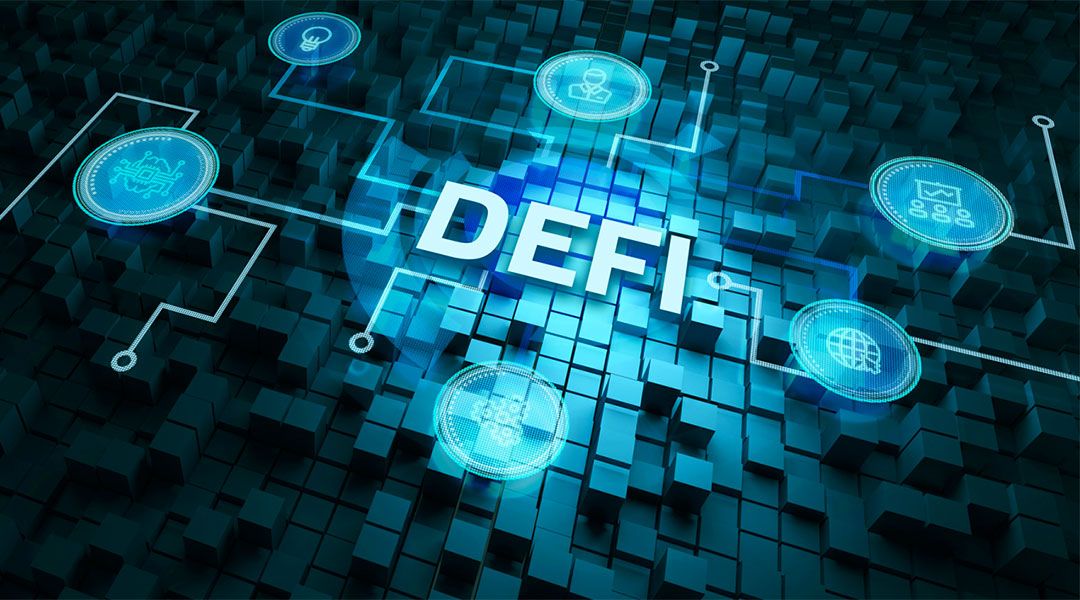The Top 11 Blockchains for Enterprise Organisations, and Why

Organisations wanting to use blockchain technology to decentralise their data and collaborate with industry partners are now presented with a bewildering range of options. Since the Bitcoin revolution began in 2008, the number of blockchain networks has mushroomed to the point where companies must carefully select which one is right for them.
They should start by understanding the meaning of decentralisation and the reasons why it could benefit them. The benefits of decentralisation include efficiency gains, the provenance of products and data, increase trust amongst industry partners, guarding against data breaches and redundancy against server outages. However, each company should understand why they want to decentralise their processes and data. After all, you do not require blockchain for every problem. Once that is known, you can decide upon the type of blockchain to use.
I have selected the top 11 blockchains that enterprise organisations could consider when doing this, with descriptions of why they are suitable and how they differ.
Bitcoin
Bitcoin is the original blockchain, developed as a fundamental part of Satoshi Nakamoto’s peer-to-peer electronic cash system that removed the need for a central authority to verify transactions.
With nearly 10,000 nodes worldwide working to verify transactions and keeping the ledger up-to-date, the Bitcoin blockchain is considered to be decentralised and highly secure. Unlike other blockchains in this list, it is not explicitly designed to enable smart contracts.
Enterprise organisations, particularly institutional investors, are involved in Bitcoin mainly because they see the cryptocurrency as a store of value rather than a method of payment. However, as a result of the Lightning Network, some enterprises are using this layer on top of the Bitcoin Blockchain to enable payment channels between parties.
Ethereum
The Ethereum blockchain was proposed by Vitalik Buterin 2013 because he was unable to convince enough Bitcoin developers that the original blockchain could be improved by adding smart contract functionality.
Ethereum was explicitly developed as a blockchain network that could support smart contracts as part of a wider open-source computing platform. For this reason, it is generally considered the first of the second generation blockchains.
Smart contracts are computer protocols that act as self-executing contracts, enabling parties to transact without relying on the services of an intermediary. Companies from insurance, finance, logistics and many other industries are using smart contracts as part of decentralised applications (dApps) on Ethereum to automate processes.
Ethereum currently uses a Proof-of-Work mechanism to reach consensus but is set to change to Proof-of-Stake soon.
IOTA
IOTA was developed to enable the Internet of Things (IoT), a network of the ever-increasing number of devices that constantly interact and share data to enable new paradigms such as connected cars and smart cities.
Significantly, it does not describe itself as a blockchain but as a tangle, which is more like a web of connected data than a series of transactions recorded in blocks and linked in a chain. The main benefits of IOTA are scalability and micro-transactions, which make it well suited to the world of IoT.
IOTA raised funds via an ICO in 2015, was in alpha and beta testing throughout 2016, and had the MIOTA token trading on exchanges in 2017. It already has partnerships with many of the world’s biggest manufacturing and technology companies, including Volkswagen, Deutsche Telecom, Fujitsu, Samsung and Bosch. However, there is still a lot of development required to make up for its promises.
Cardano
Cardano is another smart contract platform. It was created in 2015 and is often referred to as a third-generation blockchain. One of its main differentiators to Ethereum is its use of a Proof-of-Stake mechanism for consensus from its inception (whereas Ethereum is transitioning to Proof-of-Stake from Proof-of-Work).
Unlike many other blockchains, which are often forked from the original code of a blockchain that already exists, Cardano’s team claims to have built the protocol from scratch. So far, this work has progressed well with the project having recently released its ‘Shelley’ testnet. Most of the project has gone through a peer-review process to ensure the quality and efficiency of the network.
While Cardano has a strong team, including Ethereum co-founder Charles Hoskinson, it’s still early days. However, a Cardano cryptocurrency card was launched in South Korea last year. Other use cases include tokenising assets to share ownership of it or helping developing countries improve their society.
Ripple
Ripple came about as a direct competitor to Bitcoin’s original vision of being a peer-to-peer electronic cash system. While many believe Bitcoin is becoming less and less of a network for small transactions, Ripple still very much aims to be the cryptocurrency of choice for regular day-to-day payments. For this reason, banks such as Standard Chartered and Santander are utilising Ripple technology for payments and finance use cases.
The major differences between Bitcoin and Ripple revolve around control of the network and the supply of coins in circulation. In terms of coin supply, there will only ever be 21 million Bitcoins, while there will be 100 billion XRP tokens in circulation on the Ripple network eventually.
In terms of control, Bitcoin is highly decentralised, but the Ripple blockchain is controlled by a single technology firm of the same name. As a result, cryptocurrency purists do not see Ripple as a true cryptocurrency.
EOS
EOS is another smart contract blockchain that might be considered Ethereum’s biggest rival, in terms of the amount of development taking place on it. Like Ripple, it has a single company backing it, which in EOS’s case is Block.one.
EOS uses a Delegated Proof-of-Stake mechanism in its protocol, which means certain members of the network are responsible for agreeing on consensus. This approach prioritises speed over decentralisation, with a block time of around three seconds vs 10-20 sections on Ethereum. A wide range of applications exists on the EOS blockchain, from gaming and gambling to knowledge services such as Everipedia.
Stellar
Just as Ripple began as a competitor to Bitcoin’s original aim of becoming a peer-to-peer electronic cash system, Stellar came about to rival Ripple for that position too. While many now see Bitcoin as more of a store of value asset than as a medium of exchange, Ripple and Stellar are still battling it out as the payments option.
Stellar was created by one of the co-founders of Ripple, Jed McCaleb. However, while Ripple has chosen to partner with major financial institutions, Stellar and its cryptocurrency Lumens is targeted at enabling micro-payments in the developing world and for the unbanked. Like Ripple, Stellar provides almost free and instant transactions; however, it boasts smart contract functionality, which Ripple does not.
Decent
Decent is the dApp ecosystem that consists of the DCore blockchain and DCT coin. It was launched in 2017 and is currently aimed at the digital media and entertainment industries.
Like EOS, it implements a Delegated Proof-Of-Stake mechanism, although unlike other PoS networks, tokens are not awarded for staking and voting. Instead, Seeders operate in the network to store and distribute content and then be rewarded for doing so.
The blockchain has several use cases including payment splitting (automatically sharing revenue among content creators) to digital content crowdfunding (raising funds for your next content production).
Hyperledger
You may have heard of Hyperledger as the go-to blockchain technology for enterprise organisations. That is certainly the way that the people behind the project would like it to be seen. However, when considering it as an option for your organisation, a number of features and their benefits should be considered.
The key difference between Hyperledger and the other blockchains on this list is the fact that the others are public and permissionless, making them available for anyone to join. Hyperledger’s Fabric framework is designed to implement permissioned blockchains, which can appeal to organisations with concerns over privacy, or those with a need to meet regulatory requirements. It is often used to decentralise supply chains, as this example of seafood traceability shows.
NEO
NEO is another of the biggest smart contract platforms, which has often been dubbed an ‘Ethereum killer’, although that epithet is not true yet. The NEO blockchain was founded in 2014, but it came into existing in 2017 with the rebranding of Antshares.
While NEO is like other smart contract platforms in that it uses a Proof of Stake mechanism, it styles itself as being much easier to use for smart contract development. That is because it supports a variety of popular programming languages like JavaScript, Java, Python and Go, rather than only allowing smart contracts to be built in Solidity.
NEO has a clear focus on China, which, along with the fact that it is still a very centralised network, causes some enterprises to be wary of it. NEO recently announced a partnership with fellow blockchain Ontology, which will see the projects build out protocols and components to support a range of digital assets, as well as a decentralised identity framework.
Qtum
The final smart contract platform on the list is one that was created to combine the smart contract functionality of Ethereum with the security of Bitcoin. Qtum uses Bitcoin core code on machines that run an Ethereum Virtual Machine (EVM).
Qtum has also implemented a Decentralised Governance Protocol (DGP) that allows owners of the QTUM token to vote on and make changes to some blockchain parameters, without the need to implement a hard fork. Notably, Qtum has signed partnership agreements with both Amazon Web Services and Google Cloud in the last year.
One unique use case of Qtum, compared to other blockchains, is that the network allows users to have third parties pay for transaction fees. This could be useful for identity systems where the user who needs to identify himself does not want to pay for the transaction. This means that an organisation can now absorb the costs of the transaction without being the owner of that transaction.
Using blockchains to decentralise data
One final point that all enterprise organisations should consider when choosing a blockchain is how they might go about using it to decentralise their data. It is not efficient or cost-effective to save large amounts of data on a blockchain, mainly because of the way the data is linked in this format.
Instead, organisations should weigh up how they can use decentralised storage solution, such as Storj, Filecoin or IPFS, in tandem with their chosen blockchain to decentralise their data and improve their processes. Decentralised storage solutions are only one component of the ever-growing decentralised ecosystem.
Blockchain offers tremendous opportunities for enterprise organisations. Many different types of blockchains can be used for different use cases. Selecting the right blockchain for your organisation can be challenging, but hopefully, this overview helps a little bit.
Image: Sammby/Shutterstock





